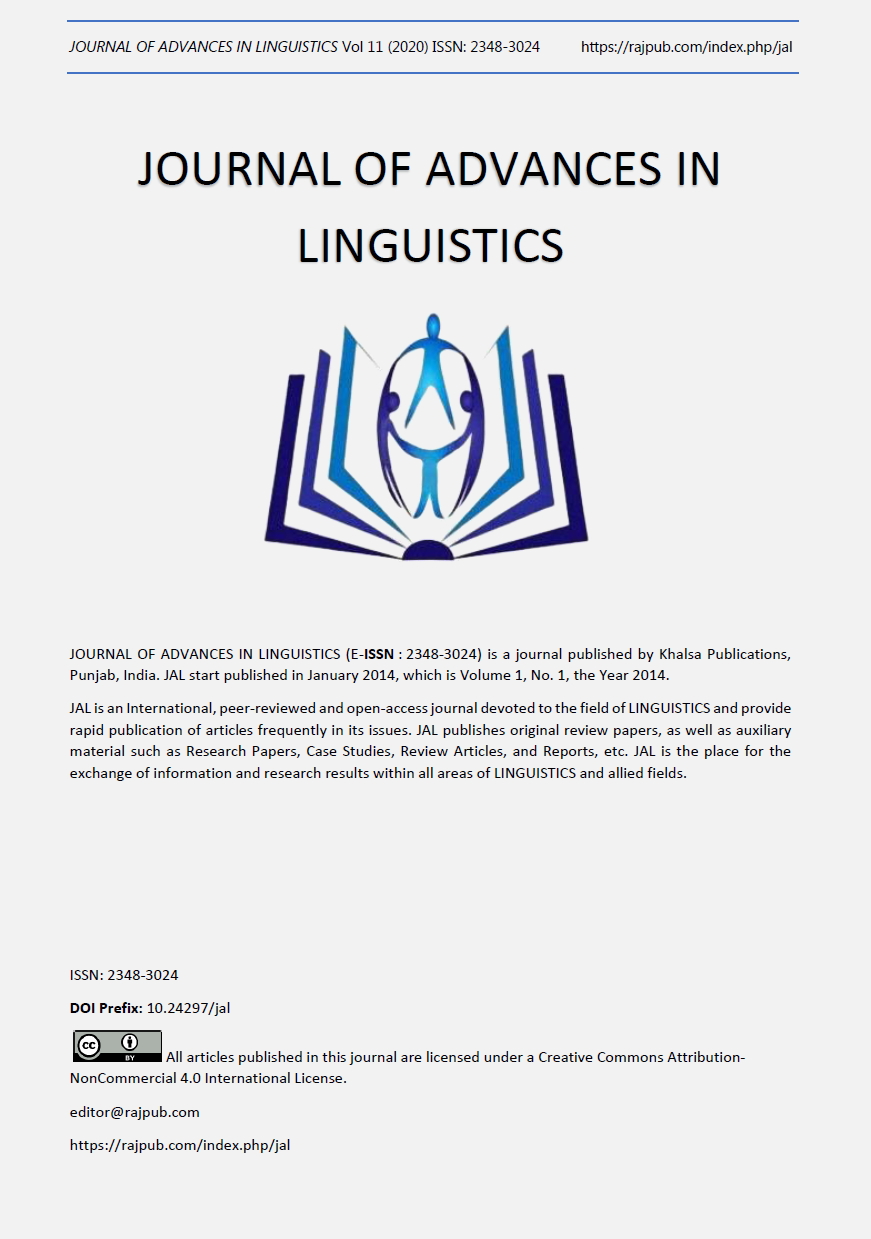Onomatopoeia in Omani Arabic
DOI:
https://doi.org/10.24297/jal.v11i.8898Keywords:
Arabia , Oman, Dialect, Omani Arabic, OnomatopoeiaAbstract
Onomatopoeia is believed to be of a widespread occurrence in all languages of the world though with different extents. Arabic language is attested to be rich in the use of onomatopoeia in speech, prose, and poetry. Omani Arabic, a unique variety of vernacular Arabic spoken in the Sultanate of Oman in the eastsouthern part of Arabia, likewise has numerous usages of onomatopoeic words in everyday life interactions. Both lexical and non-lexical onomatopoeia exist in Omani Arabic falling into three main categories: human sounds, animal sounds, and sounds associated with nature and objects. Onomatopoeic sounds appear in different syllabic forms including full syllables and non-syllabic forms with one or more consonants. The use of voiceless sounds and fricatives is more prevalent compared to other types of sounds. Cases are attested of sounds captured in diverse manners exhibiting alternation among sounds close in place of articulation as well as between emphatic sounds and their non-emphatic counterparts. The use of fricatives is used to mark the duration of sounds as opposed to the use of plosives employed to show abruptness and short duration of sounds. Morphologically, most of these words are used as verbs and derivative nouns. Reduplication is likewise used to mark the intensity and duration of actions signified by these sounds.
Downloads
References
Alameer, A. (2019). The Linguistic Features of Onomatopoeia Words in Arabic- English: Contrastive Study. International Journal of Humanities and Social Science Invention, 8 (9), 6-12
Al Jahdhami, S. (2019). Verbal Reduplication in the Omani Dialect. International Journal of Linguistics. 11 (5), 94-148
Anderson, E. R. (1998). A Grammar of Iconism. London : Associated University Presses.
Al-Zubbaidi, H.K. (2014). The Functions of Onomatopoeia in Modern English and Arabic Poetry: A Study in Selected Poems by Lawrence and al-Sayyab. Advances in Language and Literary Studies, 5 (6), 181-193
Assaneo, M; Nichols, J.I & Trevisan. M.A. (2011). The Anatomy of Onomatopoeia. PLoS ONE 6(12), 1-11
Bredin, H (1996). Onomatopoeia as a Figure as a Linguistic Principle. New Literary History, 27 (3), 559-569
Cuddon, J. A. (1999). Dictionary of Literary Terms and Literary Theory. London: Penguin Books.
Dofs, E. (2008). Onomatopoeia and Iconicity: A Comparative Study of English and Swedish Animal Sounds (M.A. Thesis). Karstads University.
Drabble, M.(2000). The Oxford Companion to English Literature. Sixth Edition. London: Oxford University Press.
Fisher, O & Müller, W (eds.). (2003). From sign to signing. Amsterdam, Philadelphia: John Benjamin
Gasser, M (2006). Iconicity and arbitrariness in spoken words. [Online] Available from: http://www.indiana.edu/~hlw/PhonUnits/iconicity.html [accessed 04 March 2008]
Glover, B. (1988). The Morphophonology of Muscat Arabic. Ph.D Dissertation. University of California, Los Angeles.
Holes, C. (1989). Towards a dialect geography of Oman. London University of Oriental and African Studies Bulletin, 52, 446-62. https://doi.org/10.1017/S0041977X00034558
Holman, C. H. (2000). A Handbook of Literature. 4th Ed. Indianapolis: ITT Books
Kakehi, H; Tamori, I & Schourup. (2011). Dictionary of Iconic Expressions in Japanese. Walter de Gruyter
Seyyedi, H., & Akhlaghi, E. (2013). The Study of Onomatopoeia in the Muslims’ Holy Write: Qur’an. Language in India, 23, 13-25.
Shaaban, K. A. (1977). The Phonology and Morphology of Omani Arabic. Ph.D. Dissertation. University of Texas, Austin.
Simpson, P. (2004). Stylistics: A Resource Book for Students. London: Routledge.
Takashi, S. (2010). Onomatopoeia in Spoken and Written English: Corpus-and Usage-based Analysis. PhD Dissertation, Hokkaido University, Japan.
Yaqubi, M, Tahir, R.I & Amini, M. (2018). Translation of Onomatopoeia: Somewhere between Equivalence and Function. Studies in Linguistics and Literature, 2 (3), 205-222
Yule, G. (1996). Pragmatics. New York: Oxford University Press.
Downloads
Published
How to Cite
Issue
Section
License
Copyright (c) 2020 Said al Jahdhami

This work is licensed under a Creative Commons Attribution 4.0 International License.
 All articles published in Journal of Advances in Linguistics are licensed under a Creative Commons Attribution 4.0 International License.
All articles published in Journal of Advances in Linguistics are licensed under a Creative Commons Attribution 4.0 International License.




